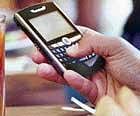
Even though the two state-run firms—Mahanagar Telephone Nigam Ltd and Bharat Sanchar Nigam Ltd—have already started 3G services in India, the competition is now set to hot up, following the auction of airways to private players to start such service.
They hope their 3G networks will be up and running over the next six months, adding another feather to the world’s second largest mobile phone network, which has some 600 million phone subscribers, adding over 20 million new users every month.
The main enabler is the technology, since the second and third generation telephony services use airwaves—also called frequency spectrum—to carry signals. Only that, airwaves are better exploited in 3G telephony, making applications several times faster than 2G. So the next time you access the Internet with a 3G-enabled phone, the page-view will be near instant.
Of course, the service will come for a cost, especially after the auction has resulted in a licence fee of over $15.5 billion for the government for the 71 slots available in 22 circles into which the country has been geographically divided.
Depending on how much of download you intend to do, measured in mega byte, the service may cost anywhere upward of Rs 1,000 to Rs 4,000 per month, as per initial estimates available with telecom operators.
“The numbers are mind boggling and it is going to be a big challenge for operators to leverage high costs and still be able to offer the service at low cost,” said Prasanto K Roy, chief editor with CyberMedia, referring to the high fee for spectrum.
“Companies will use part of this spectrum for voice services, but it will also help in the spread of data services throughout the country,” Roy said, hoping for service cost to eventually fall, as was the case with 2G services.
The handset for 3G must also be compatible and may set you back by Rs 15,000 or so, though analysts like Sanjit Chatterjee, director with the Singapore-based mobile internet solutions provider REVE Systems, expect prices to drop.
Already there is a wide choice of 3G-enabled handsets to choose from, like the Apple iPhone 3GS, Samsung i900 Omnia, Nokia E71, Nokia N96, BlackBerry Bold 9000, Nokia N85, Motorola Q9h, Sony Ericsson C702 and Samsung Corby PRO.
Globally, the first commercial launch of 3G services was by NTT DoCoMo in Japan in October 2001, followed by SK Telecom in South Korea in January 2002 and by KT, also of South Korea, in May the same year.
Agencies